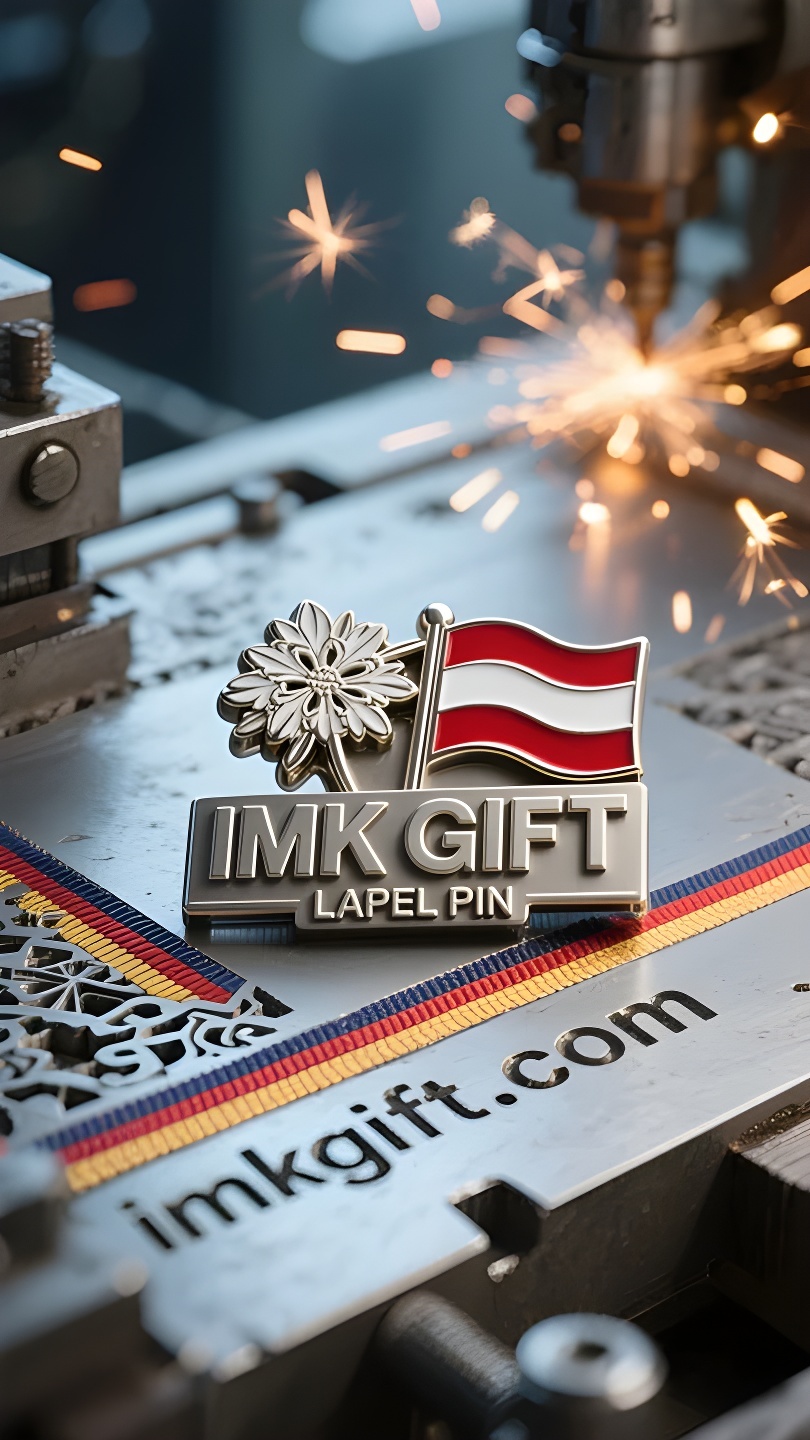in983-Edelweiß-und-Zeitgetriebe-Der-Glaube-der-nie-verblasst
▼
Im Oktober erinnern die rot-weiß-roten Nationalflaggen, die in Österreich durch die Straßen und Gassen wehen, an das Edelweiß auf den Alpengipfeln. Im Nachgang zum Nationalfeiertag interpretiert dieses Land, dessen Seele die Musik ist, die wahre Bedeutung des Nationalgeistes durch einen Dialog, der Zeit und Raum überwindet. Das reine Weiß der Nationalflagge ist wie das Edelweiß, das in den Felsspalten blüht. Diese kleine weiße Blume wächst auf einer Höhe von 3.000 Metern. Sie nutzt ihre Wurzeln, um in den gefrorenen Boden einzudringen, und ihre Blütenblätter, um starken Winden zu trotzen, so wie Österreich aus den Ruinen der beiden Weltkriege wiedergeboren wurde. Die sich langsam drehenden Zahnräder in der Spieluhr verkörpern diese Hartnäckigkeit – jede Drehung der Feder ist ein stilles Beharren im Glauben; Jede klare Note spricht von der unstillbaren Hoffnung im Unglück. In einer traditionellen Werkstatt in Innsbruck betten Handwerker Exemplare von Edelweiß in den Boden einer Spieluhr ein. Während die Melodie von „An der schönen blauen Donau“ erklingt, gleicht das präzise Ineinandergreifen der Holzzahnräder und Metallzungen der Weitergabe des österreichischen Erbes von Generation zu Generation. Eine Spieluhr muss ständig aufgezogen werden, um zu singen, genauso wie der Nationalgeist ständig mit neuer Vitalität versorgt werden muss. Die Banknoten, die die Flammen des Krieges überstanden haben, sind heute ein Segen, den Touristen der Welt bringen und der beweist, dass der wahre kulturelle Kern im Laufe der Zeit niemals verblassen wird. Wenn sich das Rot der Landesflagge im Abendrot färbt und das Spiel der Spieluhr die Stille durchdringt, dann sagt uns Österreich: Die schönste Blüte des Lebens findet immer dort statt, wo die Wolken am nächsten sind.
In October, Austria’s red, white and red national flags flying in the streets echo the edelweiss on the top of the Alps. In the aftermath of the National Day, this country with music as its soul is interpreting the true meaning of the national spirit with a dialogue across time and space. The pure white on the national flag is like the posture of edelweiss blooming in the cracks of the rocks. This small white flower, which grows at an altitude of 3,000 meters, penetrates the frozen soil with its roots, and its petals resist the strong wind, just as Austria is reborn from the ruins of the two world wars. The slowly turning gears in the music box are the embodiment of this tenacity – every turn of the spring is a silent persistence of faith; every crisp note tells of the unextinguished hope in adversity. In the traditional workshop in Innsbruck, craftsmen embed edelweiss specimens into the base of the music box. When the melody of “The Blue Danube” flows out, the precise bite of the wooden gears and the metal reeds is like the inheritance relay of generations of Austrians. Music boxes need to be continuously wound to sing, just as the national spirit needs to be constantly injected with new vitality. Those notes that have passed through the flames of war have now become blessings brought to the world by tourists, proving that the true cultural core will never fade with the passage of time. When the red color of the national flag is stained with the sunset glow, when the music box’s movement penetrates the silence, Austria tells us: the most beautiful blossoming of life always occurs in the place closest to the clouds.
十月的奥地利,街头巷尾飘扬的红白红国旗与阿尔卑斯山巅的雪绒花遥相呼应。在国庆日余韵中,这个以音乐为魂的国度,正用一场跨越时空的对话诠释着民族精神的真谛。
国旗上那道纯净的白,恰似雪绒花在岩缝中绽放的姿态。这种生长于海拔3000米的白色小花,用根系穿透冻土,花瓣抵抗疾风,正如奥地利从两次世界大战的废墟中涅槃重生。而音乐盒中缓缓转动的齿轮,恰是这份坚韧的具象化——每一圈发条的拧动,都是对信念的无声坚持;每一声清脆的音符,都在诉说逆境中不熄的希望。
在因斯布鲁克的传统工坊里,工匠们将雪绒花标本嵌入音乐盒底座。当《蓝色多瑙河》的旋律流淌而出,木质齿轮与金属簧片的精密咬合,恰似代代奥地利人的传承接力。音乐盒需要持续上弦才能歌唱,正如民族精神需要不断注入新的活力。那些穿越战火的音符,如今化作游客带往世界的祝福,证明真正的文化内核永远不会随岁月褪色。
当国旗的红色浸染霞光,当音乐盒的乐章穿透寂静,奥地利告诉我们:生命最美的绽放,永远发生在最接近云端的地方。
▼
Contact Us
📞 Tel: +0086-760-85286839
📧 Email: sales3@imkgift.com








